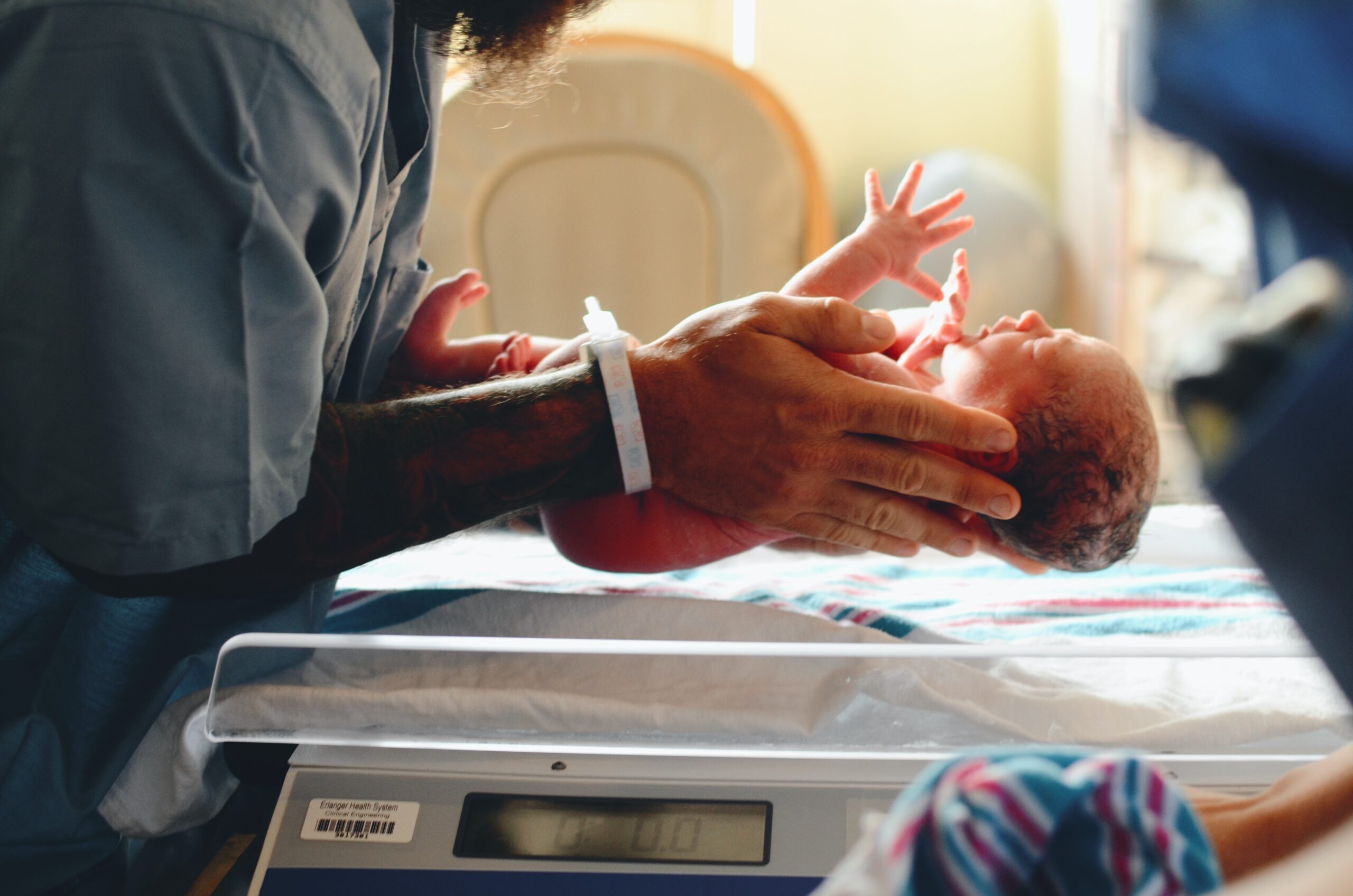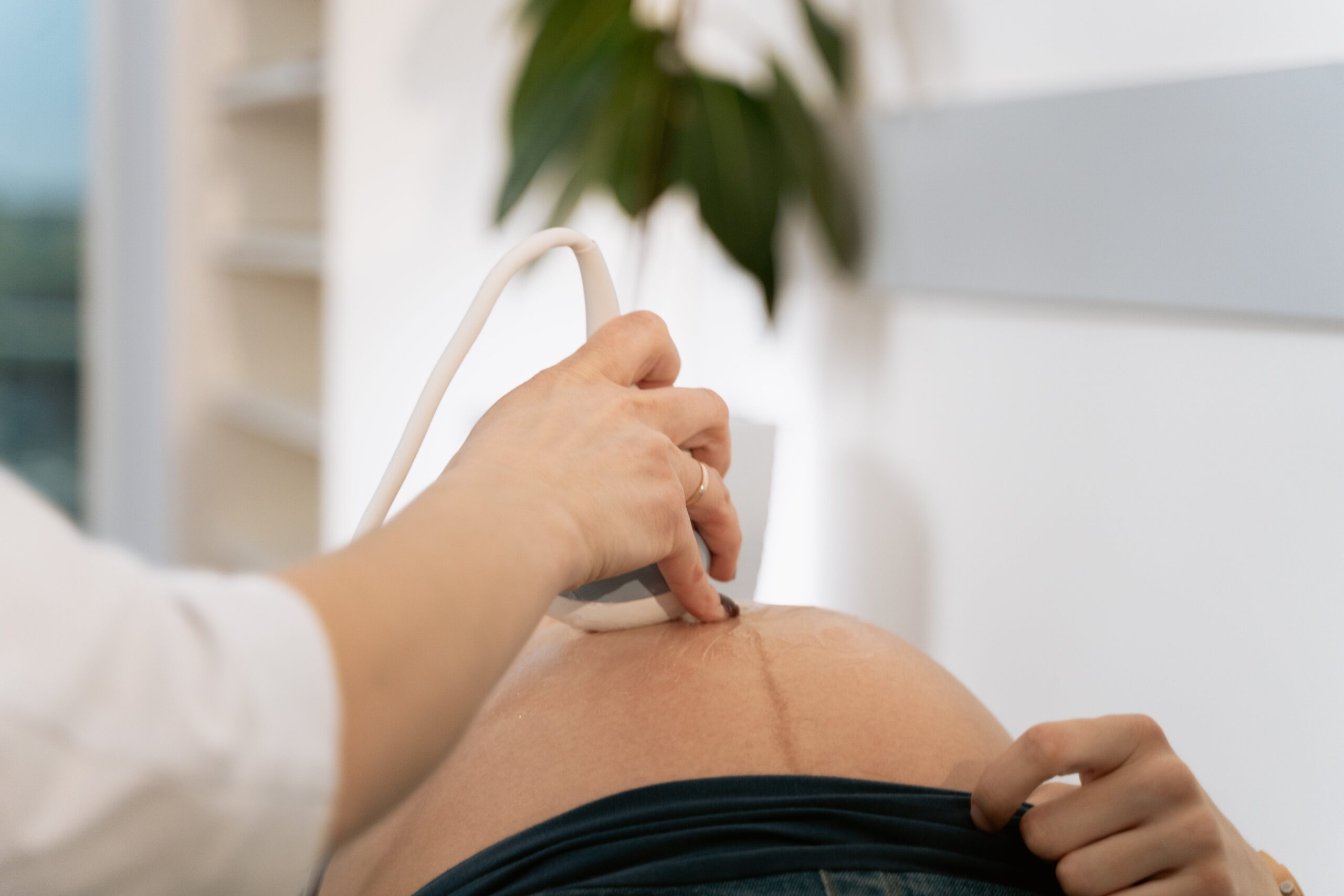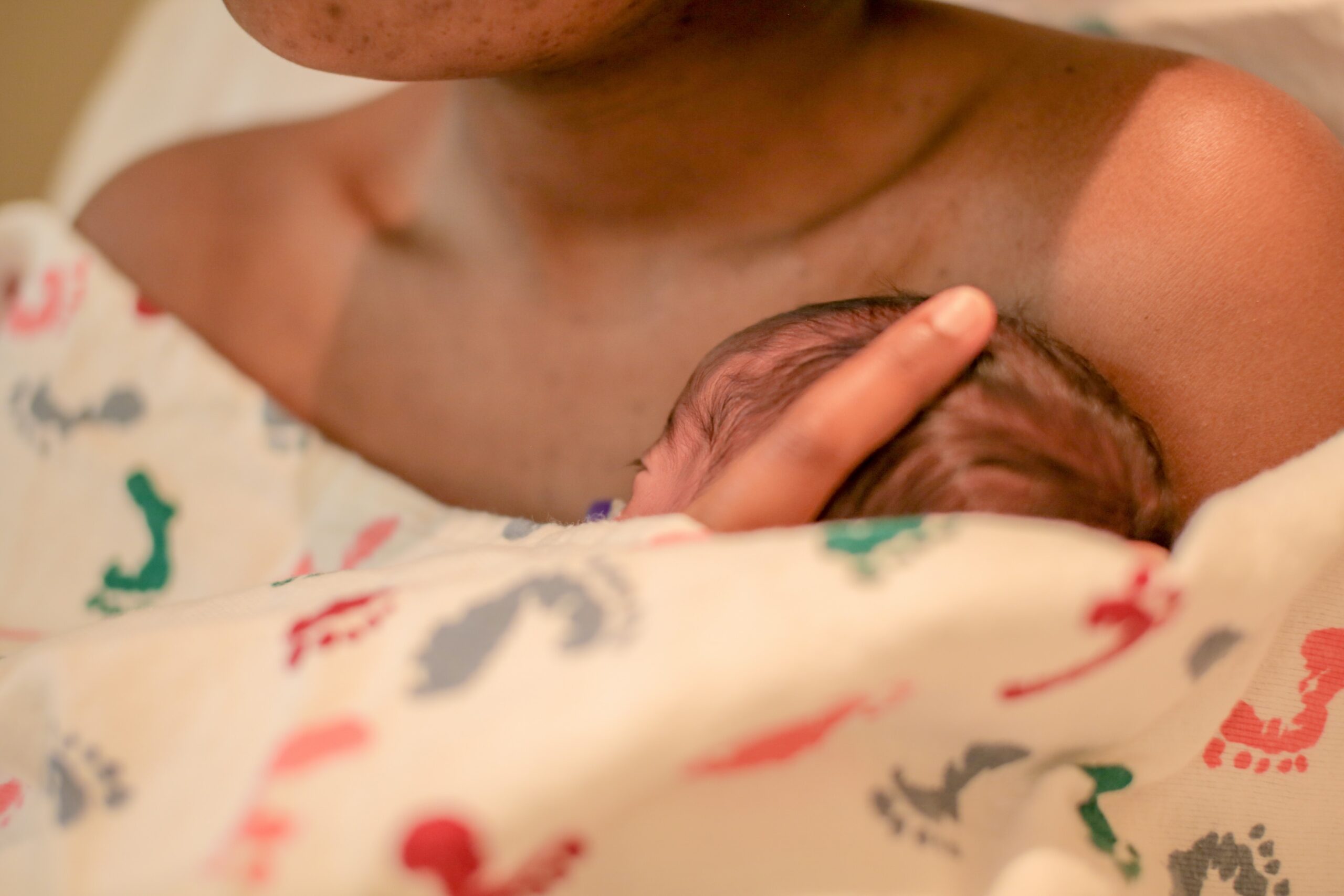Welcoming a new life into the world is an extraordinary experience, and for some, that journey includes a Cesarean section, commonly known as a C-section. Each birth story is unique, and understanding what to expect during a C-section can bring a sense of empowerment and preparedness.
In this guide, we navigate the intricacies of a C-section, from the decision-making process to the postoperative recovery. Whether planned or unexpected, this surgical approach requires careful consideration and emotional readiness.
We’ll walk you through the essential steps of preparation, the procedure itself, and the recovery period. Our goal is to provide insights, address concerns, and offer valuable information to both mothers and their support systems.
Every birth is a one-of-a-kind journey, and a C-section is no different. By the end of this guide, we aim to equip you with the knowledge and confidence needed to embrace the C-section experience with a sense of calm assurance. Let’s embark on this exploration together, recognizing the beauty and uniqueness of each birth story.
Preparation for a C-Section
As the journey toward childbirth unfolds, some expectant mothers find themselves facing the prospect of a Cesarean section or C-section. Understanding the rationale behind this decision and adequately preparing for the procedure can alleviate concerns and foster a sense of readiness. Let’s delve into the crucial aspects of preparation for a C-section, from the reasons it may be recommended to the emotional and physical readiness required.
The Decision-Making Process
The decision to opt for a C-section may arise due to various factors, including medical conditions, complications during pregnancy, or the mother’s preference. Expectant mothers need to engage in open and thorough discussions with their healthcare providers. During these conversations, the reasons for recommending a C-section should be explained, and any concerns or questions addressed. Clear communication is key in ensuring that mothers are well-informed participants in the decision-making process.
Preoperative Preparations and Instructions
Once the decision is made, there are specific steps and preparations to undertake in anticipation of the C-section. Preoperative preparations involve activities such as fasting for a certain period before the surgery and abstaining from certain medications. These measures are implemented to ensure the safety and well-being of both the mother and the baby during the procedure. Additionally, expectant mothers will receive detailed instructions from their healthcare providers regarding what to bring to the hospital, when to arrive, and any specific guidelines to follow in the hours leading up to the surgery.
Emotional Preparation for the Procedure
Preparing for a C-section goes beyond the physical aspects; emotional readiness is equally important. Many mothers may experience a range of emotions, including anxiety, fear, or disappointment. It’s crucial to acknowledge and discuss these feelings with healthcare providers, partners, or support persons. Participating in prenatal classes or seeking the guidance of a counselor can be beneficial in addressing emotional concerns and fostering a positive mindset leading up to the procedure.
Support from Partners and Loved Ones
The support of partners, family, and friends plays a pivotal role in the preparation process. Partners, in particular, should be involved in discussions with healthcare providers, attend prenatal appointments, and actively participate in the decision-making process. Understanding the nuances of the procedure together can strengthen the support system, ensuring that both the physical and emotional well-being of the expectant mother are prioritized.
The C-Section Procedure
The C-section procedure is a carefully orchestrated medical intervention designed to ensure the safety and well-being of both the mother and the baby. As we step into the operating room, let’s explore the step-by-step breakdown of the surgical process, the various elements involved, and the support systems in place to guide expectant mothers through this significant moment in their childbirth journey.
Step-by-Step Breakdown
The journey of a C-section begins as the expectant mother is prepped for surgery in the sterile environment of the operating room. Typically, an intravenous (IV) line is inserted to administer fluids and medications. The medical team ensures continuous monitoring of vital signs, creating a secure and controlled setting for the procedure.
Following the initial preparations, anesthesia is administered to ensure the mother’s comfort during the surgery. Depending on the circumstances, either general anesthesia or regional anesthesia, such as an epidural or spinal block, may be employed. Once the anesthesia takes effect, a catheter may be inserted to empty the bladder, and a sterile drape is placed to maintain a sterile field.
The surgeon then makes an incision, commonly a horizontal incision (a low transverse incision) just above the pubic hairline. This incision provides access to the uterus, and the medical team carefully navigates through the layers of tissue to reach the amniotic sac. Subsequently, an incision is made in the amniotic sac to reveal the baby. The skilled hands of the surgical team guide the safe delivery of the baby, a truly momentous event in the course of the procedure.
Anesthesia Options and What to Expect
The choice of anesthesia is a critical aspect of the C-section procedure, and it is tailored to the specific needs and circumstances of each case. General anesthesia may be recommended in emergencies or when regional anesthesia is contraindicated. Regional anesthesia options, on the other hand, allow the mother to remain awake and alert while providing effective pain relief during the surgery.
Expectant mothers are often briefed on the anesthesia options beforehand, enabling them to make informed decisions in collaboration with their healthcare providers. An anesthesiologist, a crucial member of the medical team, plays a key role in ensuring the mother’s comfort and well-being throughout the procedure.
Involvement of Partners or Support Persons
Recognizing the significance of emotional support, many healthcare facilities encourage the involvement of partners or support persons in the C-section procedure. In planned C-sections, partners may be present in the operating room, offering a reassuring presence for the expectant mother. This involvement can create a shared experience for both partners, fostering a sense of connection and shared responsibility in welcoming their child into the world.
Communication with the Medical Team
Open communication between the expectant mother and the medical team is fundamental during a C-section. The surgical team often communicates with the mother throughout the procedure, providing updates and reassurance. Being informed about each step of the process can contribute to a sense of control and understanding, fostering a positive experience for the expectant mother.
Immediate Post-Procedure Care
As the C-section procedure concludes, a new chapter unfolds in the form of immediate post-procedure care. This critical period involves the transition from the operating room to the recovery room, where both mother and baby receive attentive care to ensure a smooth and comfortable start to their journey together. In this section, we’ll explore the first moments after the C-section, from the initial recovery steps to the initiation of crucial bonding moments between the mother and her newborn.
Introduction to the Recovery Room Environment
Following the successful delivery of the baby, the mother is gently moved to the recovery room—a space designed for the initial stages of post-C-section care. The recovery room environment is characterized by a focus on close monitoring of vital signs and the immediate well-being of both the mother and the newborn. Healthcare professionals in the recovery room play a crucial role in providing support and reassurance during this delicate transition.
Monitoring Vital Signs and Baby’s Well-Being
In the recovery room, continuous monitoring of vital signs is paramount. Healthcare providers keep a close eye on the mother’s blood pressure, heart rate, and oxygen levels, ensuring that her recovery progresses smoothly. Simultaneously, the medical team pays meticulous attention to the baby’s condition, assessing vital signs, and addressing any immediate needs.
The initial moments after a C-section are crucial for ensuring that both mother and baby are stable and adapting well to the changes brought about by the surgical procedure. This vigilant monitoring sets the foundation for a secure and healthy start to their postpartum journey.
Initiating Skin-to-Skin Contact and Breastfeeding
Encouraging early bonding between the mother and her newborn is a priority in immediate post-procedure care. Whenever possible, healthcare providers facilitate skin-to-skin contact between the mother and the baby. This intimate connection not only promotes emotional bonding but also offers physiological benefits, such as regulating the baby’s temperature and fostering a sense of security.
In addition to skin-to-skin contact, the initiation of breastfeeding is another important aspect of immediate post-C-section care. Healthcare professionals provide guidance and support to help mothers establish breastfeeding, recognizing its numerous benefits for both the baby’s health and the mother’s recovery.
Addressing Immediate Concerns or Discomforts
As the effects of anesthesia gradually wear off, it’s common for mothers to experience various sensations and emotions. Healthcare providers in the recovery room are attentive to any immediate concerns or discomfort the mother may have. Pain management strategies are implemented, and any questions or anxieties are addressed promptly to ensure the mother’s comfort and peace of mind during this critical phase of recovery.
Recovery at the Hospital
The hospital stay following a C-section is a crucial period where both mother and baby receive attentive care to support their recovery and adjustment to the new dynamics of parenthood. This section delves into what to expect during the recovery at the hospital, covering the duration of the stay, pain management strategies, guidelines for movement and activity, and the fostering of essential bonding moments.
Length of the Hospital Stay After a C-Section
The duration of the hospital stay after a C-section can vary, with the typical length ranging from 48 to 72 hours. This timeframe allows healthcare professionals to closely monitor the mother’s recovery, address any immediate concerns, and ensure both the mother and the baby are adapting well. During this period, nurses guide post-operative care, offer breastfeeding support, and monitor vital signs, fostering a supportive environment for the new family.
Pain Management Strategies
Effective pain management is a priority during the recovery period at the hospital. Mothers are often prescribed pain medication to alleviate discomfort and promote a smoother recovery. Healthcare providers carefully monitor pain levels, adjusting medications as needed to ensure optimal pain relief without compromising the mother’s overall well-being. Open communication between the mother and the medical team is encouraged to tailor pain management strategies to individual needs and preferences.
Movement and Activity Guidelines
While it’s essential to allow for sufficient rest and recovery, healthcare providers also emphasize the importance of gradual movement and activity. Early ambulation, such as short walks within the hospital room, is encouraged to prevent complications and promote circulation. Guidance on proper body mechanics, such as getting in and out of bed, is provided to minimize strain on the incision site. Striking a balance between rest and gentle activity supports the healing process and aids in a quicker return to normal daily activities.
Bonding with the Newborn During Recovery
Recovery at the hospital is an opportune time for mothers to bond with their newborns. Healthcare professionals actively encourage skin-to-skin contact, fostering a nurturing environment that promotes emotional connection and the establishment of breastfeeding. Partners and support persons are integral in supporting these bonding moments, creating a shared experience that contributes to the well-being of both the mother and the baby.
As the hospital stay progresses, healthcare providers continuously assess the mother’s recovery milestones, ensuring that she is well-prepared for the next phase of the post-C-section journey: recovery at home.
Home Recovery
As the hospital stay comes to a close, the transition to home recovery marks the next phase in the post-C-section journey. This section provides insights into managing incision care, addressing post-operative discomfort, and gradually resuming daily activities. Additionally, we’ll explore how the support of Postpartum Doulas at the Motherhood Center can enhance the at-home recovery process.
Managing Incision Care and Hygiene
One of the primary focuses during home recovery is the careful management of the C-section incision. Healthcare providers typically provide detailed instructions on how to clean and care for the incision site, emphasizing the importance of keeping it clean and dry to prevent infection. Monitoring for signs of infection, such as redness, swelling, or discharge, is crucial, and any concerns should be promptly communicated to healthcare professionals.
Maintaining good hygiene practices, including gentle cleansing and patting the incision site dry, contributes to a smooth recovery. Loose, breathable clothing can also aid in preventing irritation and promote comfort during the healing process.
Handling Post-Operative Discomfort and Pain
Post-operative discomfort is common during the initial days of home recovery. Continuing prescribed pain medications as directed by healthcare providers can effectively manage discomfort. Additionally, applying ice packs to the incision area (following medical recommendations) and adopting comfortable resting positions can contribute to pain relief.
Open communication with healthcare providers about pain levels and any concerns is essential. Balancing rest with gentle movement is encouraged, with individuals gradually increasing activity levels as they feel comfortable.
Resuming Daily Activities and Exercise Post-C-Section
Gently reintegrating daily activities and incorporating light exercise is crucial for a smooth home recovery after a C-section. Embrace mild stretches and consider joining postpartum yoga classes at the Motherhood Center— designed to cater to the unique needs of postpartum recovery. Led by experienced instructors, these classes provide a supportive environment for gentle exercises, fostering physical well-being and offering a chance for relaxation and connection with other new mothers.
As part of the recovery process, healthcare providers may offer guidance on when it is safe to resume specific activities, including driving and lifting heavier objects. Partners and support persons play a vital role in assisting with daily tasks, allowing the mother to focus on her recovery and bonding with the newborn.
Postpartum Doulas at the Motherhood Center: A Supportive Resource
At the Motherhood Center, Postpartum Doulas are dedicated to providing valuable support during the home recovery period. These trained professionals offer assistance with a range of postpartum needs, including emotional support, newborn care, and guidance on breastfeeding. Postpartum Doulas at the Motherhood Center can also share insights into optimal self-care practices, helping mothers navigate the physical and emotional aspects of recovery with confidence.
Whether it’s assistance with light household chores, providing a listening ear, or offering evidence-based information, Postpartum Doulas are a valuable resource in promoting a positive and supported home recovery experience. Their presence can alleviate the adjustment challenges that come with the post-C-section period, fostering a nurturing environment for both mother and baby.
Support Systems for C-Section Moms
Navigating the post-C-section period is made significantly smoother with robust support systems in place. In this section, we’ll explore the importance of a strong support network and highlight the role of Mama Circle at the Motherhood Center—a postpartum support class designed to empower and connect mothers during this transformative journey.
Importance of a Strong Support Network
Recognizing the significance of emotional and practical support is paramount for mothers recovering from a C-section. Partners, family, and friends form the foundation of this support network, providing assistance with daily tasks, offering a listening ear, and fostering an environment conducive to rest and recovery. Open communication with loved ones ensures that the unique needs and challenges of the post-C-section period are understood and addressed.
Mama Circle at the Motherhood Center: A Postpartum Support Class
As an integral part of the Motherhood Center’s commitment to comprehensive care, Mama Circle stands out as a dedicated postpartum support class. Tailored to meet the diverse needs of all mothers, this class provides a nurturing space for sharing experiences, gaining insights, and building connections with fellow moms. Led by experienced facilitators, Mama Circle fosters a sense of community, offering a platform to discuss the joys and challenges of motherhood.
Covering a range of topics, from self-care practices to baby care tips, Mama Circle empowers mothers with valuable knowledge and a supportive network. It’s a haven where C-section moms can find solace, understanding, and encouragement as they navigate the unique aspects of their postpartum journey.
Conclusion: Embracing Your Unique C-Section Recovery Journey
As we conclude this comprehensive guide to navigating a C-section, we’ve explored the multifaceted aspects of preparation, the intricacies of the procedure itself, and the vital steps in recovery. Each C-section recovery journey is a unique story, shaped by individual experiences, emotions, and triumphs.
From the decision-making process to the supportive environments of hospitals and homes, the strength of a mother’s journey lies in the networks she builds, the knowledge she gains, and the compassion she extends to herself.
In the pursuit of a positive and empowered recovery, consider the wealth of resources offered by the Motherhood Center. From experienced Postpartum Doulas providing personalized assistance to the inclusive and supportive community found in Mama Circle, there are numerous avenues to enhance your journey.
To learn more about the diverse resources available and how they can specifically support you, reach out to the Motherhood Center. Your unique story deserves the utmost care, and Motherhood Center is here to ensure you navigate your C-section recovery journey with knowledge, support, and the empowering connections that will stay with you long after this chapter has closed. Contact us today to discover the tailored resources that await you on your path to a fulfilling and well-supported post-C-section recovery.
FAQs
How long does a C-section procedure typically take?
The duration of a C-section can vary but generally takes about 45 minutes to an hour. However, emergency C-sections may be quicker, while planned ones might take a bit longer.
What are the potential risks and complications associated with C-sections?
While C-sections are generally safe, like any surgery, they carry risks such as infection, bleeding, or adverse reactions to anesthesia. Your healthcare provider will discuss these risks during the decision-making process.
Can I have a birth plan if I’m having a planned C-section?
Absolutely. Even with a planned C-section, you can have a birth plan outlining your preferences for the procedure, such as who you want in the room, music preferences, and preferences for immediate post-procedure care.
When can I resume normal activities and exercise after a C-section?
It’s crucial to consult with your healthcare provider, but generally, light activities like walking can begin soon after. Strenuous exercises should wait until you receive clearance, usually around six weeks post-C-section.
Are there any long-term effects or considerations after having a C-section?
While most women recover fully, there can be long-term considerations, such as a slightly increased risk for certain complications in future pregnancies. Regular check-ups with your healthcare provider will monitor and address any concerns.






